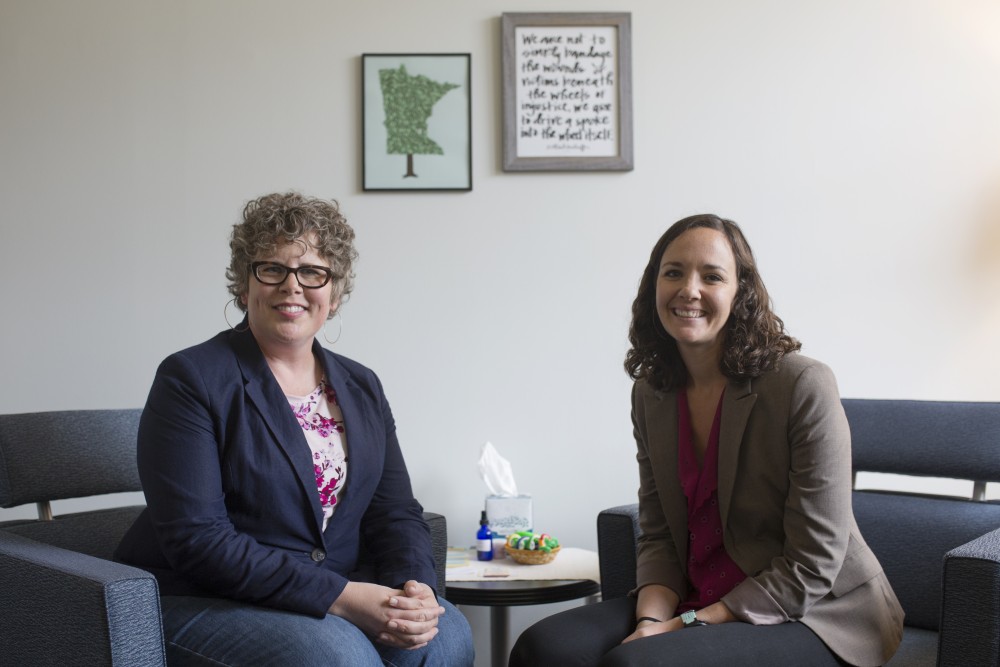An increase in demand for stress management services at the University of Minnesota led to the creation of a new program last spring that hopes to expand its aid to students in the fall.
In April, the Office for Student Affairs created the OSA Care Program, which supports students and provides them with resources to navigate the University. The program is using the summer to find ways to accommodate students for the upcoming academic year.
The Care Program consists of two care managers — trained professionals who help students manage their mental health and utilize the University’s care resources. The University started employing a sole care manager in 2016, and hired a second to meet rising demand as part of the program.
Demand for case management at the University rose from 192 cases in the 2015-16 school year to 349 in the 2016-17 school year.
Now a team of two, care managers Emily O’Hara and newcomer Sarah Gustafson-Dombeck manage cases which range from chronic student stress to working with insurance providers and hospitals in the transition back to school after a crisis.
“It just felt like a program that gave students more agency than I feel like a lot of other resources we have at the [University] do,” said University graduate Jasmine Gill, who sought out care management services and worked as O’Hara’s assistant in the spring of 2018.

Gill said the program helps manage stressors which students find become more real and significant during college.
O’Hara said her role reminds her of when she sought help from a faculty member after feeling lost during her first year of college.
“[The faculty member] guided me, put me under her wing and helped me to succeed … I think about that, and my hope for this program is that we could be that person for students,” O’Hara said.
Care managers aid in housing and food security concerns, areas which other mental health services do not necessarily focus on, said Glenn Hirsch, assistant vice provost for Student Affairs and director of Student Counseling Services.
O’Hara and Gustafson-Dombeck plan to expand their support network over the summer by connecting with local hospitals, physiatrists and other resources for off-site referrals when University services are not enough.
They will also continue to train faculty on reaching out to the Care Program if they see students who may be struggling.
Hirsch said care managers can reach out to at-risk students in the event that a faculty member becomes concerned for their well being.
“[Before the program] we didn’t really have a central person who would be available to reach out to that student, and the care manager really fits that role,” Hirsch said.
The two managers are also working to find ways to make drop-in hours available to students.
The Care Program relies on data from 2015, in which about 35 percent of University students say they are unable to manage their stress levels and one third have a diagnosed mental health condition.
“Students are bringing a lot more distress with them to campus than maybe they had with them in the past, or that we had been aware of in the past,” said Jennifer Larson, president of the Higher Education Case Managers Association.
This is reflected in the rise in care managers working in higher education institutions across the country. HECMA membership has risen about 30 percent annually since it formed in 2012.
“If you build a way for people to start telling you they’re worried about someone, they will tell you they’re worried about someone,” Larson said. “And the more they do that, the more people you have to serve, the more… need for more case managers.”
















